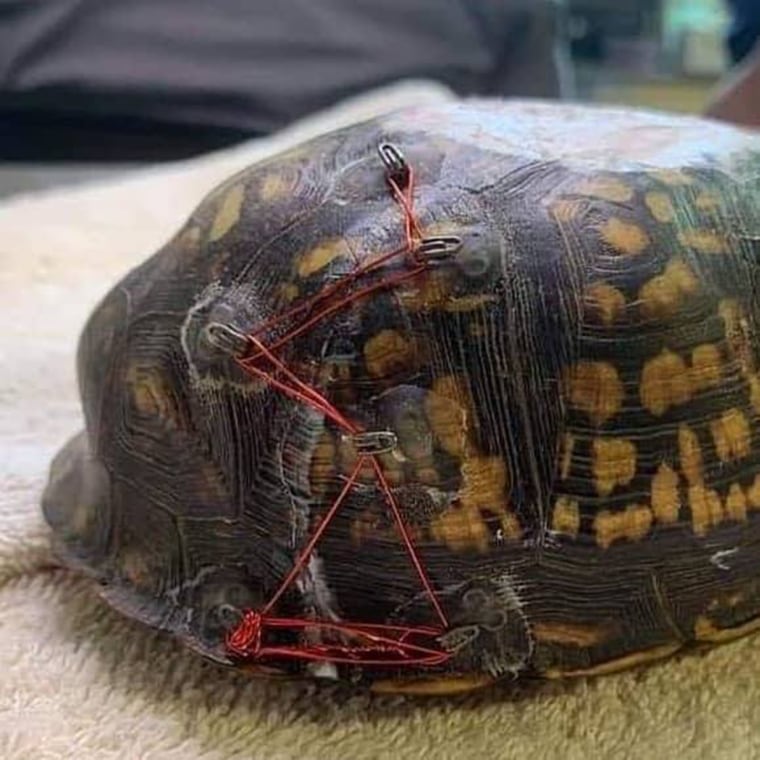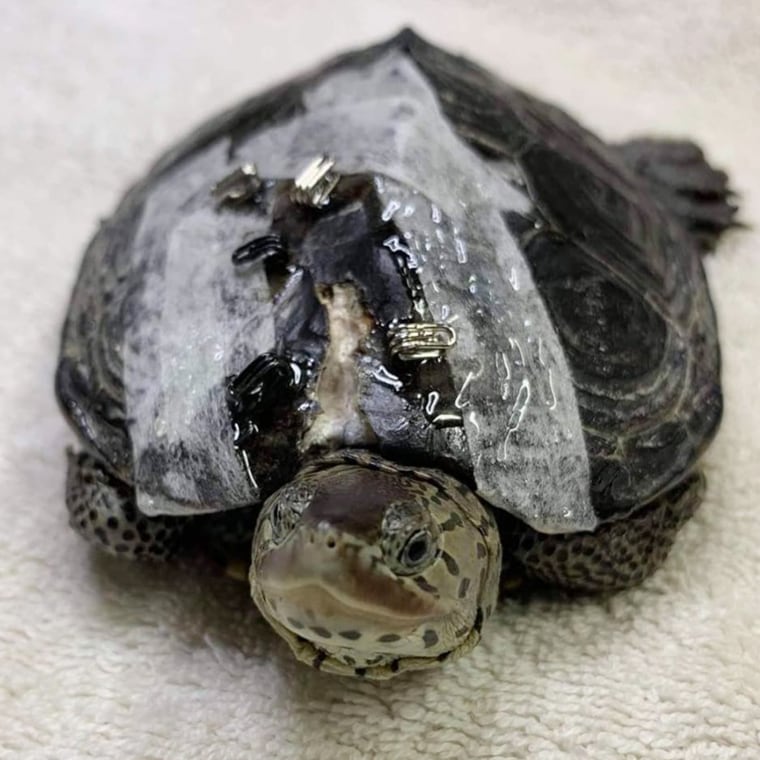A couple of animal and wildlife rescue groups that help treat injured turtles have a special donation request: They're asking for bra clasps, which can be used to repair damaged shells.
Last Tuesday, the Wildthunder Wildlife & Animal Rehabilitation & Sanctuary in Iowa posted a photo and message on Facebook asking for the hooks. The post quickly went viral, amassing tens of thousands of shares as commentators promised to send bra clasps from around the country.
"I'm completely amazed that it did what it did!" Tracy Belle, the founder and director of the organization, told TODAY.
The post was shared by the Carolina Waterfowl Rescue, a North Carolina-based volunteer group that mostly focuses on birds but occasionally treats turtles. Their post went viral as well, garnering over 11,000 Facebook shares.
"The bras are starting to pour in," Keenan Freitas, one of the staff rehabilitators at the Carolina Waterfowl Rescue, told TODAY. "Within two days, we've gotten an insane response."

While a bra clasp may seem like an odd first-aid tool, it's not as uncommon as one might expect.
"What we do with them is when you have a wound that you can’t close or a shell that has a fracture that you need to stabilize, you adhere them to the shell, one on each side of the fracture, and then hook that hook and it helps stabilize the fracture and give it time to heal," Bette Zirkelbach, manager of the Turtle Hospital in Marathon, Florida, explained to TODAY. "We have said, 'OK, does anybody have any bras here?' We've cannibalized some bras in my time here for sure."
Freitas explained that the bra clasps are ideal for severe injuries, especially ones in which the shell may be so damaged that the tissue underneath is visible.
"We just kind of weave wire through the eyelets, and as time goes on you can make them tighter," he said. "It's pretty simple, it's effective, and it works the best out of anything we've used."
According to Zirkelbach, this kind of resourcefulness is necessary; there aren't many specialized tools to treat turtle injuries, so "you get creative."

After the overwhelming response to its Facebook post, the Carolina Waterfowl Rescue shared an Amazon wish list of other supplies that it could use to treat and help injured animals. Freitas said this post has also received a positive response — one care package from California included several of the requested items.
"It's pretty overwhelming that the community is helping us out like this," he said.
Belle, Freitas and Zirkelbach cautioned that if you come across an injured turtle, your first step should always be to call an expert or licensed rehabilitation center. Zirkelbach also said that if you find an injured turtle while out on the water, you can radio the Coast Guard to ask for help.
Freitas added that anyone who rescues a wild turtle should write down exactly where they found it — since turtles spend most of their lives in one place, they need to be returned to that area once they've healed.